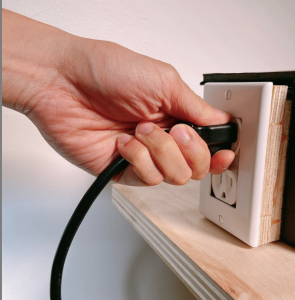Andri Kumar
Control is a VR experience that explores human kind’s false self of control of oneself and the strange form memory takes on when posed as a flashback in our minds.
https://www.andrikumar.com/control
Description
Control is a VR experience that takes users on a poetic journey. In this journey, users will get to explore what it means to have control of one's life and actions.
As you will see in the video link, users begin the journey by walking around a public space. However, once they turn a corner, they encounter a horrific humanoid figure. Immediately, they find themselves back where they started their journey. Yet, this time, as they walk around something different is happening: time only moves when they move. Nevertheless, whenever they turn the corner they once again encounter the horrific figure and begin the looping journey all over again.
I created this experience because I was inspired by my own experience with memory, control, and flashbacks. The horrific humanoid figure represents trauma. The looping experience in which the user controls time represents the experience of flashback.
Control is another one of my projects that explores the use of abstract for empathetic story-telling. According to Gestalt’s principle of closure, the brains make sense of the world by “closing up” visual gaps.
​
I designed this piece to be abstract so that users would only be given pieces of the story, resulting in them needing to put in “brain work” to understand the narrative. For example, the environment is a public space but it is unclear exactly what kind of public space– instead the user's mind makes that decision. Since the story really is only created once the users build it by filling it with their own memories, my theory is that this results in more empathetic storytelling.
When presenting this piece at the show, I will add elements around the headset. There large screen showing what users are seeing and physical objects surrounding the installation to bridge experience from VR to actual reality. These physical objects will be items from the experience, such as mannequins and miniature buildings, but will not take up much space.
Classes
Immersive Experiences (UG)











